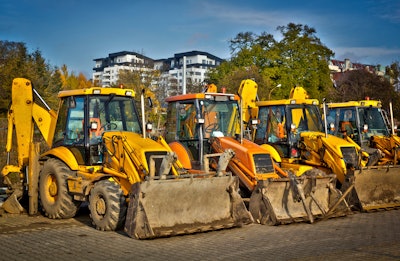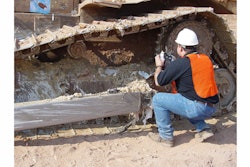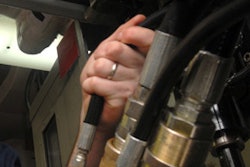
In a previous column (“Take a Formal Approach to Make Service Work for You”), I commented about the options you have to maintain equipment — you can perform in-house maintenance, outsource the maintenance or take your chances and do nothing at all. There are, however, a couple of other options. One is to trade in the unit for a new machine or sell the unit and use the cash to purchase either a used or new piece of equipment. Then, of course, we have the old standby of renting the unit when you need it, returning it when you’re done and leaving the maintenance to the rental company.
Each option has pluses and minuses associated with it, and a “cost” attached to it. The problem is being able to decide which option will make your company more efficient and more profitable.
So how do these options rank in terms of most costly to least costly? Here’s what I think.
In-house Maintenance
I suspect many of you would select in-house maintenance as the least costly option, but I wouldn’t. Just consider the manpower, parts inventories, space, equipment and tools required to do the work. There’s also scheduling the work and the overall downtime of the equipment because of a backlog of service work. Unless you have a well-managed shop using state of the art tools and equipment, doing more than just routine maintenance is going to be more expensive compared to your other options.
Trade-in for New or Used
A trade-in for a new unit lowers maintenance cost but increases ownership cost — not to mention the debt service obligation you didn’t have before. Consequently, from a cash flow standpoint, I believe the trade-in would be more costly than most of the other options. However, depending on any tax benefits involved, the trade-in could move further down the list.
Selling the Unit
Selling a unit and using the proceeds to purchase another machine most likely falls in the same pew as the trade-in transaction, or if not in the same pew, then at least in the same church. Selling the unit and buying and servicing its replacement kind of puts us back where we started.
Outsourcing Maintenance and Repairs
This is probably a pretty good option for most of the equipment you have in fleet. The work gets scheduled and is done by an experienced service tech who has the tools and equipment needed and parts required to complete the job in an efficient manner.
Another benefit of outsourcing is the ability to fix your cost for the maintenance work and get price quotes for any other repair work required. You can even purchase extended warranty policies that cover major equipment components. I also assume the techs would have access to telematics information that can be used to work with you to spot problems before they lead to unscheduled downtime.
Rental
Rental professionals figure in all expenses associated with owning and operating equipment to come up with rental rates that allow them to cover their equipment costs, shop expenses, transportation costs and all other operating expenses in terms of occupancy and admin costs. In other words, they take into account all of the same types of expenses a contractor would incur to provide them with the utility of the units in the field.
Because rental companies have to control these expenses throughout the year, you can bet they have a pretty good handle on the cost of maintaining and operating construction equipment. Rental companies know that Unit Utility = Profits — just as it does for your business.
Do Nothing
That leaves us with what more folks than you think will do, which is close to nothing. Required maintenance is not completed. Techs receive little or no training on how to maintain equipment or use the latest technology supplied by the OEMs. Parts are not on site to complete repairs, and there is no time available to do repairs even if you had to. The shop function is not managed, and so on.
Contractors that follow the “let’s do the least amount possible to keep the machines rolling” policy believe that not performing the maintenance and repairs required to provide reasonable time utilization is less costly compared to a reasonable ongoing maintenance program. But my take is that doing nothing is probably the most costly alternative in the lot.
I concluded last month’s column by stating that not doing proper maintenance may, in fact, cost you more than if you service your equipment. In this case, we are using “cost” to mean the full cost of:
- losing hours on a job and missing deadlines because equipment is not working properly (or not working at all);
- having to reschedule workers to other locations while equipment is being replaced or repaired;
- having repairs take longer than they should because parts and tools are not available;
- and having techs be unable to repair the unit (in flat rate time) because they are not trained to do this level of work.
In the end, not having equipment ready to roll on a jobsite can lead to total disarray on that particular job, and in turn impact your whole operation.
So here is my ranking of the options from most costly to least costly and, ultimately, most efficient:
- Do nothing — Most costly for the reasons stated, though contractors with small fleets may not incur as harsh a result.
- In-house maintenance — Poorly managed in-house maintenance is a problem but curable, if you have adequate work for the tech force.
- Trade-in — Purchasing a new unit is a very expensive option compared to properly maintaining existing units and extending their useful life.
- Sell the unit — Selling one unit so you can purchase another usually comes with short-term financing that eats cash.
- Outsourced maintenance — This is a viable option if properly managed, assuming you have a wide variety of equipment to maintain.
- Rental — Rent when you can and avoid the hassle concerning both cost to own and cost to operate.
This ranking may prove wrong depending on the circumstances for your business. Contractors with small fleets, or fleets that don’t require ongoing maintenance, may find it works to do maintenance in-house. But overall, if your fleet is fairly large and integral to your operation, and you lack a highly effective service department, it is probably more profitable to select some form of outsourcing of the maintenance function.

















